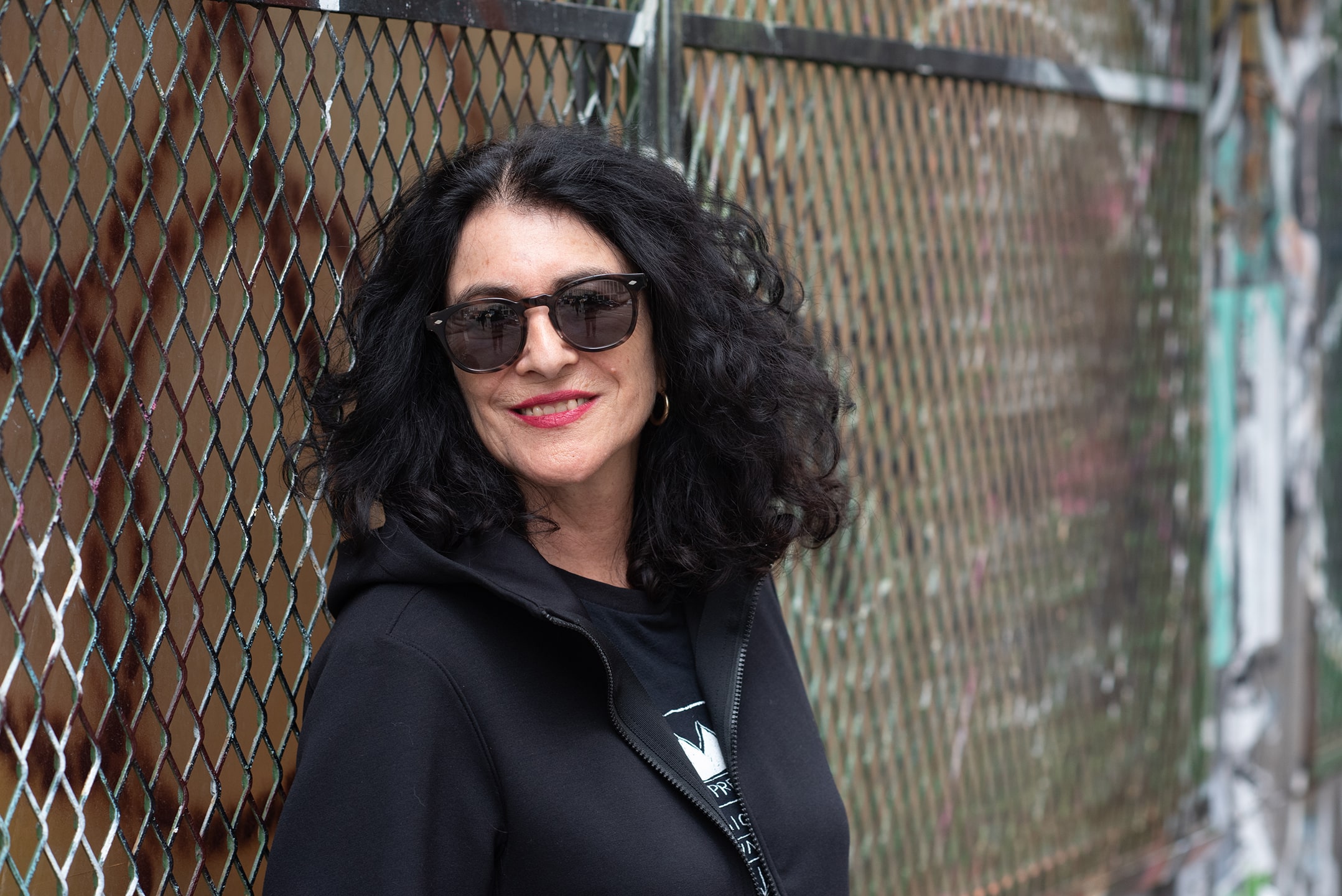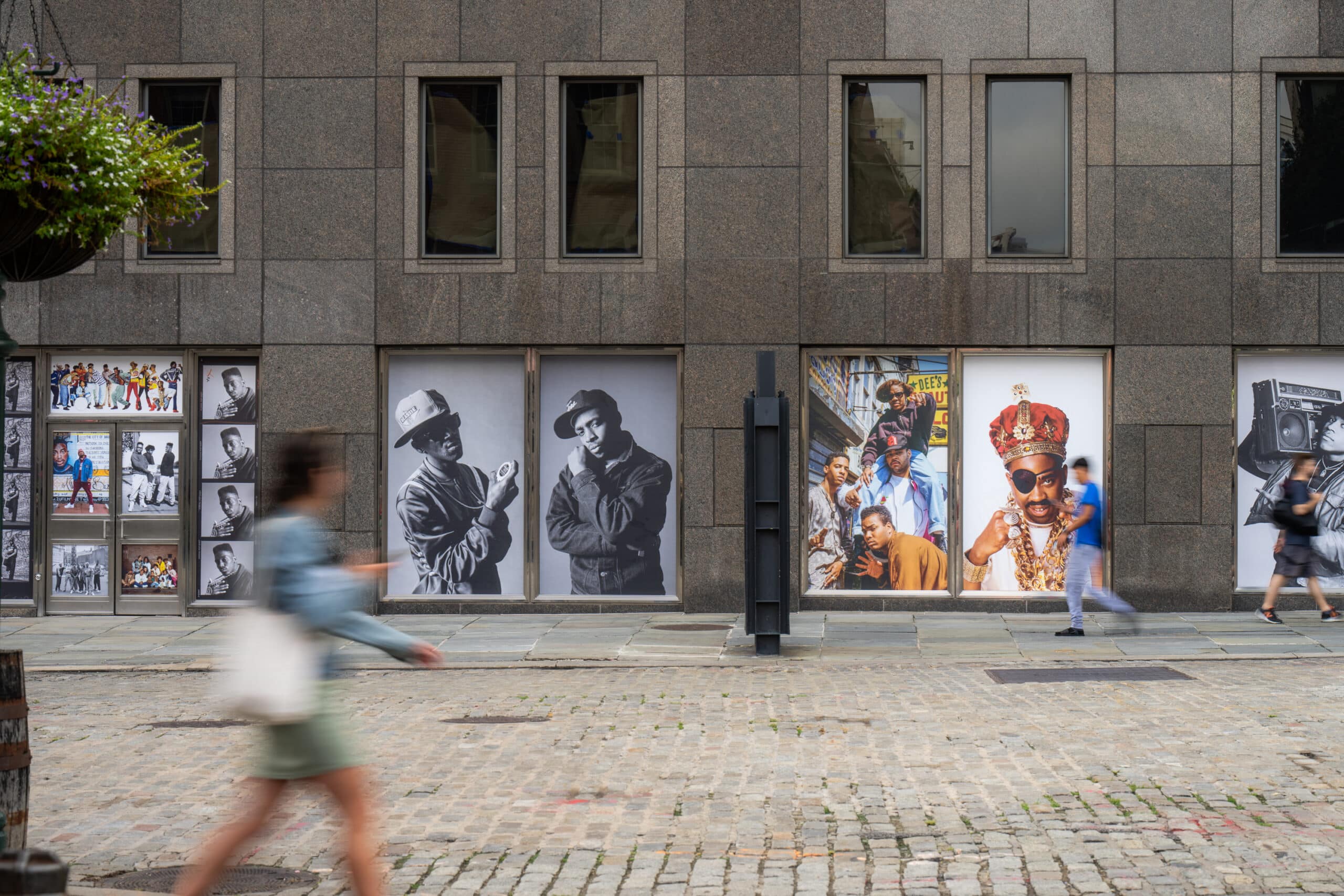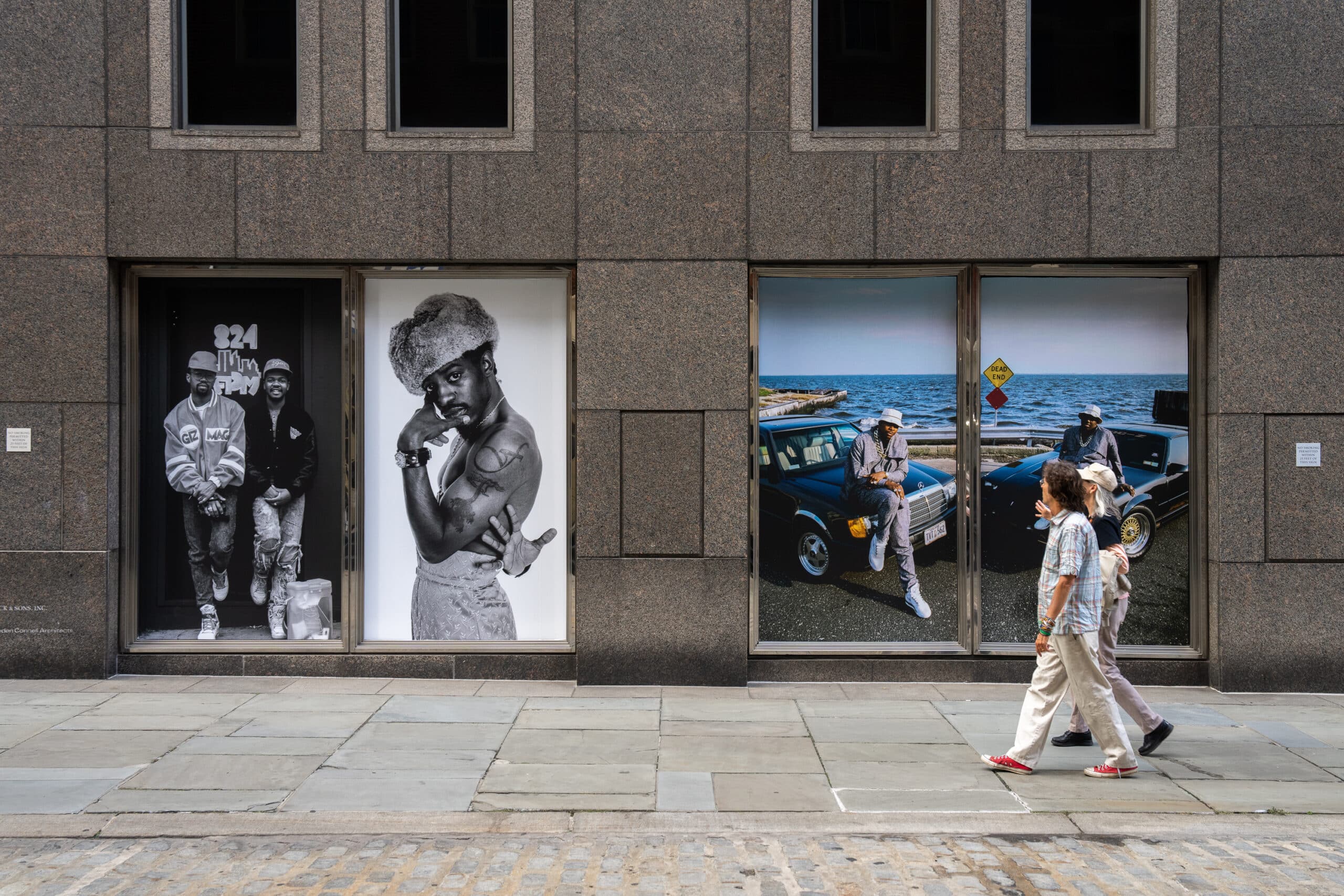
Takin’ it Back
Tracksuits. Tags. Bodegas and boom boxes. Evocative details of a fledgling hip-hop scene in early 1980s New York City. Some of these symbols of the era might have been lost to time, but British-born photographer Janette Beckman was on the scene to capture it all. Now, as hip hop celebrates its 50th anniversary, you can experience the scene’s early days, via the Seaport’s outdoor exhibition of Beckman’s work—Hip Hop at 50, presented by Photoville.
British-born Beckman started out shooting punk rock bands for music magazines in the UK. When she moved to NYC in 1983, she turned her lens on up-and-coming rap pioneers including Run-D.M.C., Slick Rick, Salt-N-Pepa, Grandmaster Flash, and LL Cool J. Here, Beckman takes us on a tour of her storied photographic career.

How did you first get into photography? Who were your first subjects?
I went to art school in London. I wanted to be a portrait painter, but after a year I decided to change to photography and enrolled at a photo school. My first project was a series of portraits of people in their living rooms in a South London apartment block.
How did you start working for music magazines like The Face?
I always loved music. One day I walked into a weekly music paper called Sounds. The editor, legendary writer Vivien Goldman, liked my photos, and she sent me to photograph the punk band Siouxsie and the Banshees. I had never photographed a band before. The next day, I came back with the prints, and they gave me another assignment. Soon, I was photographing two or three bands a week for music magazines. When The Face started, I went to work for them photographing the fans, the bands, and UK youth culture—kids on the street.
What are your most memorable moments from those years?Being sent to Italy to photograph The Clash in a bicycle stadium in Milan. Going on the Seaside Tour with 2 Tone band The Specials. Photographing the Police’s first album cover for Outlandos d’Amour in a tunnel by Waterloo Station.

What were your first impressions of hip hop?
In 1982, I photographed the New York City Rap Tour, the first hip-hop show to come to London. It blew my mind—MCs, DJs, graffiti writers, and B-Boys all performing on stage together! They were wearing Kangols, Cazals, tracksuits with lettering down the side, and fly sneakers, perfectly laced. The energy, new sounds, rappers, break-dancers, graffiti artists, the style and attitude … It was an explosion of culture that I had never seen before. That concert changed my life.
What prompted your move to NYC?
I was coming to visit a friend in NYC for Christmas. Straight off the train on West 4th Street, there were kids break dancing on pieces of cardboard and blasting music from boom boxes. The energy of the city was exciting, I started to get assignments and stayed.
What drew you into the hip-hop scene?
I was living on Avenue B and 8th Street in the 1980s. I loved the music, the style and the energy of the culture and the city. There was graffiti everywhere—backdrops for my portraits. There were art shows at spots like the Fun Gallery, music blasting from cars, clubs such as Area, the Palladium, Danceteria, people selling fake Rolex, Gucci bags and hoop earrings on Canal Street, late-night bars and diners, and so much more.

Do you remember a time when hip hop turned a corner and came out of the underground? How did things change?
In the 1980s, I was working for small record labels like Sleeping Bag and Def Jam, photographing their new artists, Run-D.M.C., Salt-N-Pepa, LL Cool J, and Slick Rick. Rap was still underground: MTV didn’t play it; neither did most of the radio stations. The musicians I photographed were at the start of their careers—fresh and creative, not celebrities. Sometime in the 1990s, hip hop became big business. Record companies and artists understood that this underground movement was worth serious money. That seemed to change things. No one could have imagined back then that hip hop would become even bigger than rock and roll.
Who are your favorite hip-hop artists and/or tracks?
That’s a hard one. It varies from day to day. I am always discovering new artists and mixes. I will always love “The Message” by Grandmaster Flash & the Furious Five, as it perfectly expresses that time in ’80s NYC. Also, Public Enemy’s “Fight the Power,” Slick Rick’s “Children’s Story,” Lauryn Hill, Gang Starr. This summer at the “Rock The Bells” concert in Queens, I photographed Rakim, Method Man, Redman, Queen Latifah, Roxanne Shanté, Run DMC, and so many other legends still rocking the mic.
Did the punk and hip-hop cultures influence your work photographing fashion campaigns?
I’ve been lucky to work with some iconic brands like Levi’s, Dior, Farfetch, Interview and more. I think they hire me for my authentic point of view and street aesthetic. It’s perhaps hard to find these days, and I’ve photographed rebels, folk from punk and hip-hop culture who made their own street style and attitude.

Why did you want to participate in this outdoor exhibition at the Seaport with Photoville?
I’ve been working with Photoville for years. I love the idea of public art. This exhibit at the Seaport is a great community activation. My images, blown up eight-feet high bring back so many emotional music memories. They allow people who may not go to galleries to see these photographs that they grew up with. The Vinyl Nights block parties we’ve been doing over the summer have been amazing, with people dancing, singing… with break-dancers, birthdays, selfies … You can’t do that in a gallery.
What are your favorite things to do in NYC?
New York is so diverse. People are friendly and discovering different neighborhoods is wonderful. There’s something different on every block. The restaurants, the art, the museums, free music in the parks, taking the subway to the beach, and of course taking photos, it’s never boring.
What’s next on your agenda?
I just photographed a female rapper (BVNGS) and jazz musician Jerron “Blind Boy” Paxton for their upcoming albums. Now, it’s on to more photo shoots and some exhibitions in the works in Europe.

Hip Hop at 50 is on show at 22 Fulton Street, in the windows on the corner of Fulton & Front Streets, through October 31, 2023. The exhibition is part of the Photoville Festival, featuring more than 80 outdoor exhibitions of thought-provoking imagery from across the globe.
